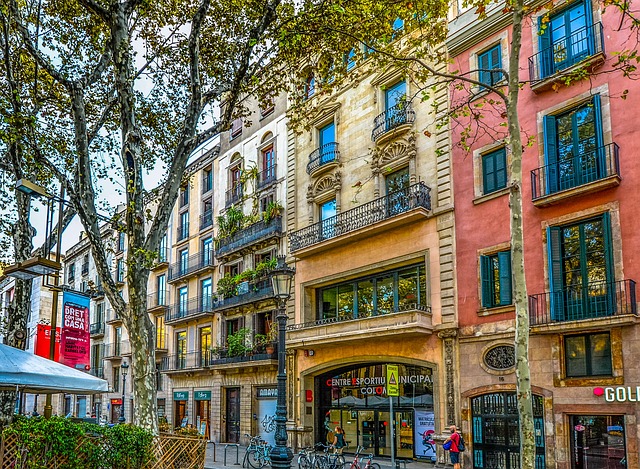Barcelona is the capital of Catalonia, a region in northern Spain, and is renowned throughout the world for being lively, and full of joy and energy.
In addition to being a city with a very specific architectural style, it has undergone various urban regeneration interventions and reconstruction of entire suburban neighborhoods thanks to funds for the 1992 Olympics.
Its citizens now enjoy a young metropolis full of historic monuments and modern buildings.
Today tourism is one of the main sources of the economy of the city and of the entire region. For this, let’s find out together what to do and what to see in Barcelona.
How does Barcelona’s architectural style influence its atmosphere?
Anyone who goes to Barcelona, perhaps for a weekend, will look forward to returning, and there are many young people who decide to move there, attracted by the liveliness of the metropolis and by the presence of the sea which certainly has a strong charm.
In Barcelona, architecture is not limited to Gaudí, a very famous Spanish architect of Catalan culture, but the city is full of more modern monuments that refer to his very particular imprinting in color and imagination.
In fact, it often seems that when architects design for Barcelona they are ready to take many more risks and use much brighter colors than they would use in other cities.
Gaudì was particularly influenced by natural forms. Most of his buildings are inspired by organic forms that exist in nature.
The buildings of Barcelona contribute in a fundamental way to creating the atmosphere of the city, from its cultural activities, both to the parties organized on its promenade, La Barceloneta.
Let’s understand together which these monuments and the must-see attractions when you are in Barcelona.
What to do and what to see in Barcelona in a few days
If you are in Barcelona for a few days of vacation, here is what you absolutely must not miss.
The Holy Family
The symbolic building of Barcelona is certainly the Sagrada Familia, Gaudì’s masterpiece.
It is a large church inserted in the urban context and eternally under construction.
In fact, this very complex architecture created by Gaudì is a work left unfinished and subject to continuous maintenance and restoration work.
the boulevard
It is not possible to go to Barcelona without strolling down the Rambla. The most famous street in the city, it was once the city borough.
Today the road has been completely renovated and many hotels and B&Bs have found their home in the narrow streets of the old quarter.
La Rambla is one kilometer long and goes from Plaza Catalunya to the sea, a street crowded with tourists and many young people, full of culinary and local proposals for tapas or souvenir shops.
Boqueria market
Halfway up the Rambla is La Boqueria market, a food market, covered, the most famous in Barcelona and perhaps Europe.
It immediately stands out for its Art Nouveau metal roof from the first twenty years of the 1900s.
The market, today above all a tourist attraction, offers many stalls of fruit and vegetables and ready-to-eat foods to be tasted while walking.
Fruits, vegetables, sweets, and spices create a play of colors that make this market unique.
Gothic Quarter and the Cathedral
Remaining in the center of the city, between the Rambla, via Laietana, the Port Vell, and Plaza Catalunya extends the Barrio Gotico, the old Gothic quarter, which is made up of very pleasant streets and alleys to visit at any time of day.
Not to be missed in this maze of narrow streets is the cathedral square, overlooked by this huge building built in the Gothic style.
the riverside
A few steps from the Cathedral, the La Ribera district is little visited by tourists but in reality, much loved by those who live in Barcelona.
Here is the Picasso Museum, Parc de la Ciutadella, the green lung of the city, and in the area, you can taste excellent typical tapas.
Gaudi’s works in Barcelona
Aside from the Sagrada Familia, architect Gaudi left Barcelona with an enormous legacy.
Let’s start with Park Güel, a marvel not to be missed. It is located in the north of the city, you can get there by public transport or by taxi.
On foot you can visit the neighborhood that was designed by Gaudì as a residential neighborhood but, having abandoned the project, it has become a park that dominates the whole city with its particular buildings.
Casa Milà and Casa Batllò
Gaudì also left the Casa Milà and the Casa Batlló to his beloved Barcelona.
Located along Passeig de Gracia, one of Barcelona’s most exclusive shopping streets, they are approximately 10 meters apart.
Built as private homes, today they are home to museums and can also be visited inside.
Barceloneta beach
Barcelona is not only the city center, shops, tapestries, and historical monuments. Barcelona is also a seaside city and the Barceloneta district is an example of how an urban regeneration plan can change the city and the lifestyle of its inhabitants forever.
Before 1992 it was a degraded district, today it is the area most loved by citizens who frequent it in their free time, to play sports, has a drink, walk, or enjoy the sea life.

It could cover a range of topics related to health, wellness, beauty, personal growth, and social issues, all from the perspective of striving for beauty, intelligence, youthfulness, and impartiality
